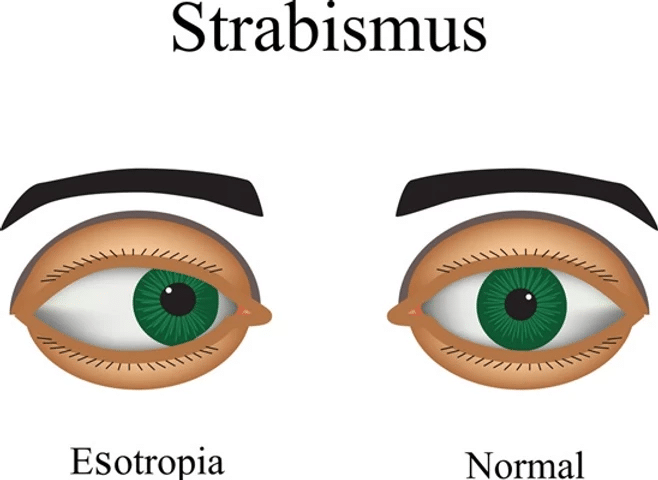Lazy eye, or amblyopia, causes reduced vision in one eye and is most common in young children. Lazy eye rarely affects both eyes, but if you notice one of your child’s eyes wandering or they squint repeatedly or tilt their head, it may be a sign of amblyopia.
So, what common conditions can underlie lazy eye?

Squint
A squint is easy to identify – one eye looks straight ahead while the other looks up or down, left or right. The brain then receives two conflicting images which can be difficult for developing brains to process, resulting in one eye becoming dominant. In adults, a squint can cause double vision. Lazy eye caused by a squint will most often be treated with an eye patch in children, or by special eye exercises or surgery in adults.
Differences in vision
A significant difference in the vision in each eye can also lead to lazy eye. This is often due to long-sightedness but short-sightedness and eye imperfections like astigmatism can also lead to the condition, as the brain only processes the image from the eye with normal vision. These conditions are usually corrected by the use of prescription contact lenses or glasses.
Sight deprivation
Lazy eye can also result from sight deprivation that causes a loss of vision in one eye. These diverse conditions can include a droopy eyelid that blurs the vision or an eye trauma that results in scarring of the cornea, the transparent layer that covers the eye. Childhood cataracts can also slow the normal development of vision in one eye and lead to amblyopia. In fact, conditions that deprive the eye of sight can cause the most severe forms of lazy eye and need immediate treatment through surgery to prevent permanent vision loss.
When to consult your optician
Untreated, lazy eye can lead to permanent loss of vision in adults, which is why it’s important to consult a doctor as soon as symptoms appear. Regular eye tests will also pick up any problems which can then be treated using the most appropriate method, either by treating the underlying condition or encouraging the use of the lazy eye. If you suspect that your child is having problems with their vision then act as quickly as possible. Treatment for lazy eye is less successful after the age of six, and unlikely to be successful at all if started after the age of eight.





